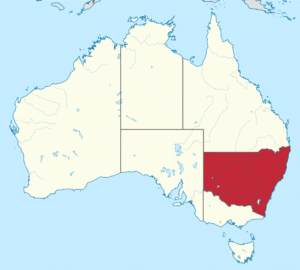Introduction:
New South Wales (abbreviated as NSW) is a state on the east coast of Australia. It borders Queensland to the north, Victoria to the south, and South Australia to the west. Its coast borders the Tasman Sea to the east. The Australian Capital Territory is an enclave within the state. New South Wales’ state capital is Sydney, which is also Australia’s most populous city. In September 2018, the population of New South Wales was over 8 million, making it Australia’s most populous state. Just under two-thirds of the state’s population, 5.1 million, live in the Greater Sydney area. Inhabitants of New South Wales are referred to as New South Welshmen.

The Colony of New South Wales was founded as a penal colony in 1788. It originally comprised more than half of the Australian mainland with its western boundary set at 129th meridian east in 1825. The colony also included the island territories of New Zealand, Van Diemen’s Land, Lord Howe Island, and Norfolk Island. During the 19th century, most of the colony’s area was detached to form separate British colonies that eventually became New Zealand and the various states and territories of Australia. However, the Swan River Colony has never been administered as part of New South Wales.
Lord Howe Island remains part of New South Wales, while Norfolk Island has become a federal territory, as have the areas now known as the Australian Capital Territory and the Jervis Bay Territory.
History:
Prehistory:
The prior inhabitants of New South Wales were the Aboriginal tribes who arrived in Australia about 40,000 to 60,000 years ago. Before European settlement there were an estimated 250,000 Aboriginal people in the region.
The Wodi Wodi people are the original custodians of the Illawarra region of South Sydney. Speaking a variant of the Dharawal language, the Wodi Wodi people lived across a large stretch of land which was roughly surrounded by what is now known as Campbelltown, Shoalhaven River and Moss Vale.

The Bundjalung people are the original custodians of parts of the northern coastal areas.
1788 British Settlement:
The European discovery of New South Wales was made by Captain James Cook during his 1770 survey along the un-mapped eastern coast of the Dutch-named continent of New Holland, now Australia. In his original journal(s) covering the survey, in triplicate to satisfy Admiralty Orders, Cook first named the land “New Wales”, named after Wales. However, in the copy held by the Admiralty, he “revised the wording” to “New South Wales”.
The first British settlement was made by what is known in Australian history as the First Fleet; this was led by Captain Arthur Phillip, who assumed the role of governor of the settlement on arrival in 1788 until 1792.
After years of chaos and anarchy after the overthrow of Governor William Bligh, a new governor, Lieutenant-Colonel (later Major-General) Lachlan Macquarie, was sent from Britain to reform the settlement in 1809. During his time as governor, Macquarie commissioned the construction of roads, wharves, churches and public buildings, sent explorers out from Sydney and employed a planner to design the street layout of Sydney. Macquarie’s legacy is still evident today.
